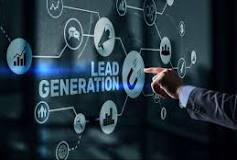What is lead generation?
Lead generation is the process of generating consumer interest for a product or service with the goal of turning that interest into a sale. In online marketing, this typically involves collecting a visitor’s contact information (called a “lead”) via a web form.
Lead generation is a core part of the sales funnel for many B2B companies since their products can cost thousands of dollars and web visitors are less likely to buy their product or service directly from the website. Collecting new leads allows the businesses to educate and nurture prospective customers through email marketing before reaching out to qualified leads directly via salespeople.
Lead generation is crucial for eCommerce and other businesses because email marketing remains one of the most effective online channels. Capturing a potential customer’s contact information allows businesses to stay connected and market to them later, even if they don’t buy right away.
There are two main components to the lead generation process: getting traffic to your site and then convincing them to share their contact information with you.
The first step of the process is finding an effective way to attract prospects to your website. Depending on your company’s goals and budgetary constraints, there are many ways to start attracting prospects to your site. The following are some of the key ways businesses use to drive traffic:
- Search Engine Marketing (SEM)—SEM is a form of online advertising that involves paying search engines (such as Google or Bing) to display ads in their search results. Because search is the primary way people navigate the web, this can be a big source of traffic.
- Search Engine Optimization (SEO)—Search engine optimization is similar to SEM in that it involves getting traffic from search engines, but rather than paying search engines for ads, SEO involves optimizing your website for search engine algorithms so that it appears higher in the organic search results.
- Social media platforms like Facebook and LinkedIn are now top traffic sources, rivaling search engines. You can boost traffic by sharing engaging content or investing in paid ads on these networks to reach broader audiences.
Components of leads
- Display Ads – This type of advertising comes in various forms, such as video, image, audio, or text. These ads can be purchased on relevant websites in order to drive that traffic to your own site, usually via pay-per-click (PPC) models.
- Offline Events – Online marketing can often begin offline. Events such as industry conferences and meetups can be good ways to network with potential new customers, inform them about your brand, and get them to your website. These can be events that you attend as a guest, events that you sponsor, or events that you host yourself.
- Once visitors start arriving at your site, the next step is to convert them into leads via an online form. This can be done using many different lead generation tactics but involves getting users interested in your product or service and getting them to submit their contact info, often through the use of an incentive (known as a “lead magnet”).
Here are common marketing strategies businesses leverage to generate leads:
- Content – Providing high-quality content in exchange for contact information is a common practice in lead generation. This content can be anything from a white paper, case study, or infographic to an ebook or exclusive video. The idea is to entice potential customers in your target audience with a piece of content that is relevant to your business and require them to provide their contact info before they can get access to the content.
- Webinars—A webinar is a live video session that your visitors can view and participate in. Webinars typically last between half an hour and an hour and provide information and educational material about a specific topic. “Webinars are interactive, time-intensive, and effective for generating leads, educating, and converting them.”
- Landing pages—the best lead generation tool of all is your product. If your product solves a major pain point, visitors may share their contact info without needing incentives. A well-crafted landing or sales page can showcase your product’s value, educate prospects, and drive conversions. “These pages highlight benefits, address pain points, and build trust, making it easier to capture leads without extra rewards.” Landing page optimization is the key to making sure you are getting the most out of these pages.
How to improve your lead generation
“Beyond boosting traffic, you can optimize your website in various ways to generate more leads.”
“Test different content formats, CTAs, and lead magnets to drive quality leads.” Tailor each piece to your buyer personas, focusing on what’s most relevant and valuable to them. Analyze performance to see what resonates best.
How to use A/B testing to improve lead generation
“Many site elements can be improved, but launching all changes at once isn’t effective or data-driven.” That’s where A/B testing comes in.
A/B testing lets you test site changes on traffic segments to see their actual impact on conversion rates. Testing allows you to make data-driven decisions about changes to your site, rather than just going with your gut.
“A/B testing tools like Optimizely let you easily test different versions of your site to see which one performs best.”